W. Eugene Smith and Aileen M. Smith – Minamata
Photo book of the month
In dieser kleinen Kolumne stelle ich von Zeit zu Zeit ein Fotobuch vor, welches mir gerade sehr am Herzen liegt. Dabei handelt es sich nicht – oder nicht zwangsläufig – um eine Neuerscheinung. Es ist einfach ein Buch, welches mir irgendwie in die Hände gefallen ist und das ich Anderen gerne nahelegen möchte.
In this small column, I want to introduce from time to time a photo book, which is just close to my heart. It is not – or not necessarily – a new release. It is simply a book that somehow came into my hands and that I would like to suggest to others.
December 2016 | W. Eugene Smith and Aileen M. Smith – Minamata
Das Buch, welches ich heute vorstellen möchte, ist etwas Besonderes. Es ist dabei alles andere als neu, genauer gesagt ist es sogar mehr als vierzig Jahre alt. Und es ist nicht nur fotografisch ein Meilenstein für die Dokumentarfotografie, sondern es war auch journalistisch eine der ganz wichtigen Arbeiten in der Mitte des letzten Jahrhunderts. Von der menschlichen Dimension mal ganz zu schweigen… Ich wusste zwar von dem Buch und auch dem Thema, aber erst neulich habe ich mir ein gebrauchtes Exemplar bei einem Buchhändler aus New York bestellt (es gibt, glaube ich, keine Neuauflagen des Buches und noch ungebrauchte Exemplare davon kosten schnell mal ein paar hundert Euro).
The book I would like to introduce today is something special. It is anything but new; actually, it is more than 40 years old. And, it is not only a milestone in terms of documentary photography: journalistically speaking, it became one of the most important works in the midst of the last century. Not to mention the human dimension… I knew about this book and its topic as well, but just recently, I ordered a second-hand copy from a bookseller in New York (there are, as far as I know, no new editions of this publication and unused copies may easily cost some hundred euros).
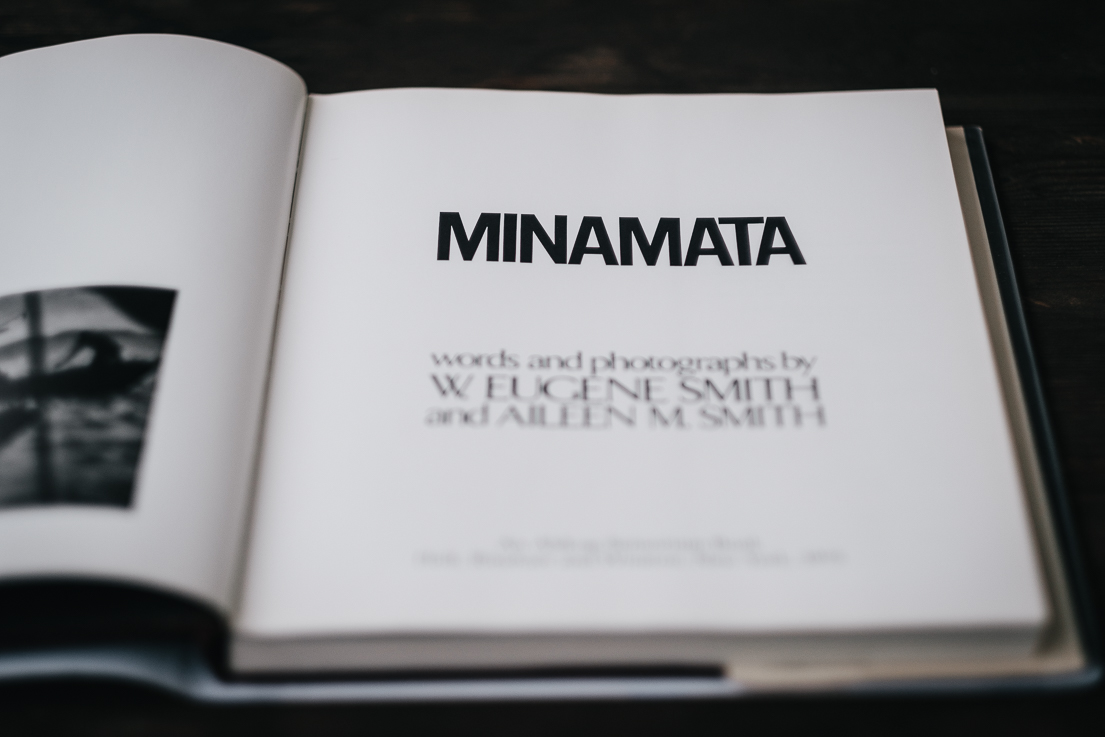
Ab und zu gibt es Fotobücher, die man als solche kaum bezeichnen möchte oder sollte. Denn sie sind weit mehr als das und haben auch eine ganz andere Intention, als “nur” eine Fotobuch zu sein. Zu diesen Büchern gehört zweifellos das Buch “Minamata” des amerikanischen Fotografen W. Eugene Smith, welches er gemeinsam mit seiner zweiten Ehefrau Aileen bis 1975 – also drei Jahre vor seinem Tod – erarbeitete und herausbrachte. Auch wer mit der Geschichte um die Vorkommnisse nahe der japanischen Kleinstadt Minamata nicht vertraut ist, wird schon im Prolog der Buches merken, dass es hier sicher nicht nur oder nicht in erster Linie um ein einfaches Fotobuch handelt. Dort heißt es in den ersten Sätzen: “Das ist kein objektives Buch. Das erste Wort, welches ich aus der Folklore des Journalismus entfernen würde, ist das Wort objektiv. Das wäre ein gigantischer Schritt in Richtung Wahrheit in der ‘freien’ Presse. Und ‘frei’ sollte vielleicht das zweite Wort sein, welches entfernt wird”.
Es ist ein höchst emotionales, bewegendes und nicht selten auch traurig und wütend machendes Buch, welches damit auch zu einem guten Teil die Persönlichkeit von W. Eugene Smith widerspiegelt: exzessiv und kompromisslos bis zum Schluss in seiner Arbeit wie auch in seinem Leben. Und es ist vielleicht eines der Standardwerke, welches – zumindest für mich – die immense Kraft und einmalige Wirkung der Fotografie als ein dokumentarisches Medium sehr eindrucksvoll unter Beweis stellt.
Every now and then, there are photo books which you do not want to or should hardly describe as such. They are far more than that and also have another intention then just simply being a photo book. Without doubt, one of these books is ‘Minamata’ by the American photographer W. Eugene Smith, which he edited and published together with his second wife Aileen until 1975 and, hence, three years before he died. Also those who are not familiar with the history of the incidents that happened close to the Japanese town of Minamata will already notice in the prologue that this is certainly not, or not in the first place, a simple photo book. The first sentences state: ‘This is not an objective book. The first word I would remove from the folklore of journalism is the word objective. That would be a giant step toward truth in the “free” press. And perhaps “free” should be the second word removed.’
It is a highly emotional and moving book which, not rarely, makes you sad and angry and, thus, reflects W. Eugene Smith’s personality to a large extent: excessive and uncompromising up to the end in both, his work and his life. And it is most probably one of the standard pieces that – at least for me – prove how the documentary medium of photography can unfold its immense power and unique effect very impressively.
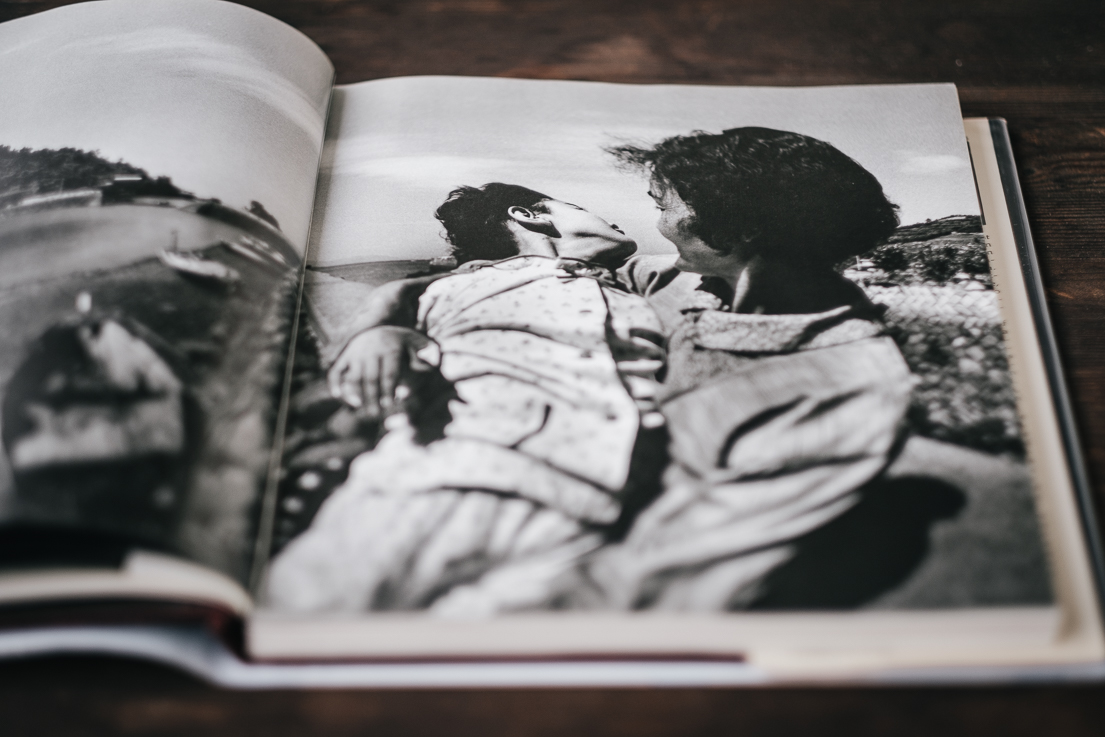
Entsprechend der bereits erwähnten Worte im Prolog gestalten Eugene und Aileen Smith (Aileen hat – auch aufgrund ihrer japanischen Wurzeln und ihrer Sprachkenntnisse – neben vielen Recherchen, Notizen und Interviews auch ca. 1/4 der in dem Buch veröffentlichten Bilder gemacht) sowohl die Texte als auch die Bilder. Ich möchte mich hier im Wesentlichen jedoch lediglich auf die Fotos beziehen, auch wenn ich die sehr informativen und ausführlichen Texte – inklusive einer Karte, einem medizinischen Report und einer Chronologie – sehr begrüße und für das geschichtliche Verständnis auch sehr wichtig finde. Trotzdem kann ich nicht aus meiner Haut und betrachte das Ganze mehr aus der Sicht des Fotografen.
Und hier zeigt sich in vielen dieser Bilder die Stärke des Mediums Fotografie. Nie nur dabei, (fast) nie aus der Distanz, nie versteckt, sondern in den meisten Fällen ganz offen und direkt als Beobachter und zugleich Teilnehmer am Geschehen agierend, gelingt es den beiden Fotograf*innen, den Betrachter sowohl dokumentarisch als auch emotional mitzunehmen. Das technische Mittel der Wahl ist hier sehr oft der weite, manchmal auch der sehr weite Winkel. Wenn es noch eines Beweises für die berühmte Aussage von Robert Capa bedurft hätte, so kann man diesen hier an dutzenden Beispielen exzellent studieren. Nur wer nah dran ist, ist auch wirklich nah dran…
In accordance with the words in the prologue already mentioned, Eugene and Aileen Smith (Aileen made – also due to her Japanese roots and language skills – besides of much research, notes and interviews, approximately 1/4 of the photographs published in the book herself) designed the text as well as the photographs. However, I would like to merely refer to the photographs, although I appreciate the very informative and detailed texts – including a map, a medical report and a chronology – and find this highly important for the historical understanding. Still, a leopard can’t change its spots and I see the whole thing from a photographer’s perspective.
It is here where the strength of the medium photography is shown in many of the pictures. Never only thereby, (almost) never from the distance, never hidden, but in most cases open and direct as observers and as participants, the two photographers are able to take along the viewer both documentarily and emotionally. Technically, the method of choice here is the use of the wide, sometimes even the very wide angle. If proof of the famous saying by Robert Capa were still needed, dozens of examples are provided here to verify this. Only if you are close enough, you can be close enough…
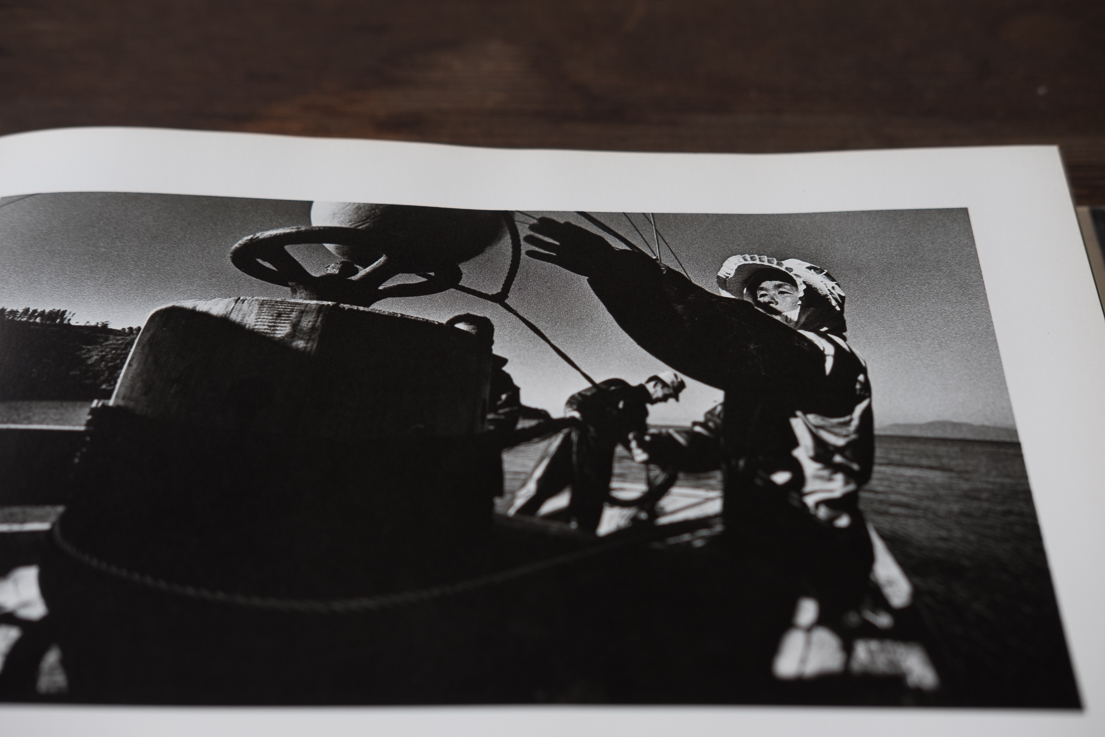
Dass die Fotograf*innen mit diesem Werk nicht nur die emotionalen, sondern auch die dokumentarische und journalistische Dimension der Geschichte sehr gut abdecken, wird an vielen Stellen im Buch ebenfalls deutlich. Politik, Demonstrationen, verschiedene gesellschaftliche Gruppen… all dies wird dokumentiert und ist dabei ebenfalls meist mit der gleichen fotografischen Sorgfalt und Aussagekraft in den Bildern gepaart. Es lohnt sich wirklich, sich Zeit zu nehmen und das Buch immer wieder mal in Ruhe durchzublättern. Vor allem einige der wirklich starken Bilder sind es, von denen man auch heute noch als Fotograf*in extrem viel lernen kann. Auch wenn sich Trends und Stile ändern, gewisse Dinge bleiben wahrscheinlich manchmal doch zeitlos…
In addition, in several places in the book it becomes clear that the photographers are not only able to cover the emotional dimension, they also serve the documentary and the journalistic one. Politics, demonstrations, different groups of society… all these topics are well documented with the same photographical care and significance. It’s worth it to take your time and to leaf through the book in peace from time to time. Actually it’s the really strong pictures you can still learn a lot from as a photographer. Even though trends and styles change as time goes by, certain things probably remain timeless…

Natürlich sind es auch die ganz berühmten Bilder, die einen besonders berühren und die manche(r) vielleicht auch schon gesehen hat, selbst wenn man das Buch und die Geschichte hinter Minamata gar nicht kannte. Das wahrscheinlichste berühmteste dieser Bilder ist jenes, auf dem Tomoko Uemura, von Geburt an stark behindert durch die Folgen der Quecksilbervergiftung, von ihrer Mutter gebadet wird. Vielleicht eines der stärksten Bilder von Eugene Smith überhaupt, in jedem Fall ein unglaublich berührendes Foto mit einer seltenen Mischung aus Nähe und zugleich Distanz. Es sind jedoch auch sehr viele andere Bilder drin, die dieses Buch wirklich lohnenswert machen.
Of course, it’s the very famous pictures what readers will find so powerful and which many people have seen before, even if they did neither know the book nor the history behind Minamata. The most prominent of those pictures probably is that, which shows Tomoko Uemura, severely disabled by birth due to the mercury poisoning, being bathed by her mother. Maybe it is one of the strongest pictures of Eugene Smith, in any case it is an unbelievably touching photo with a rare blend of closeness and distance. However, there are also many more pictures in it which make the book so worthwhile.
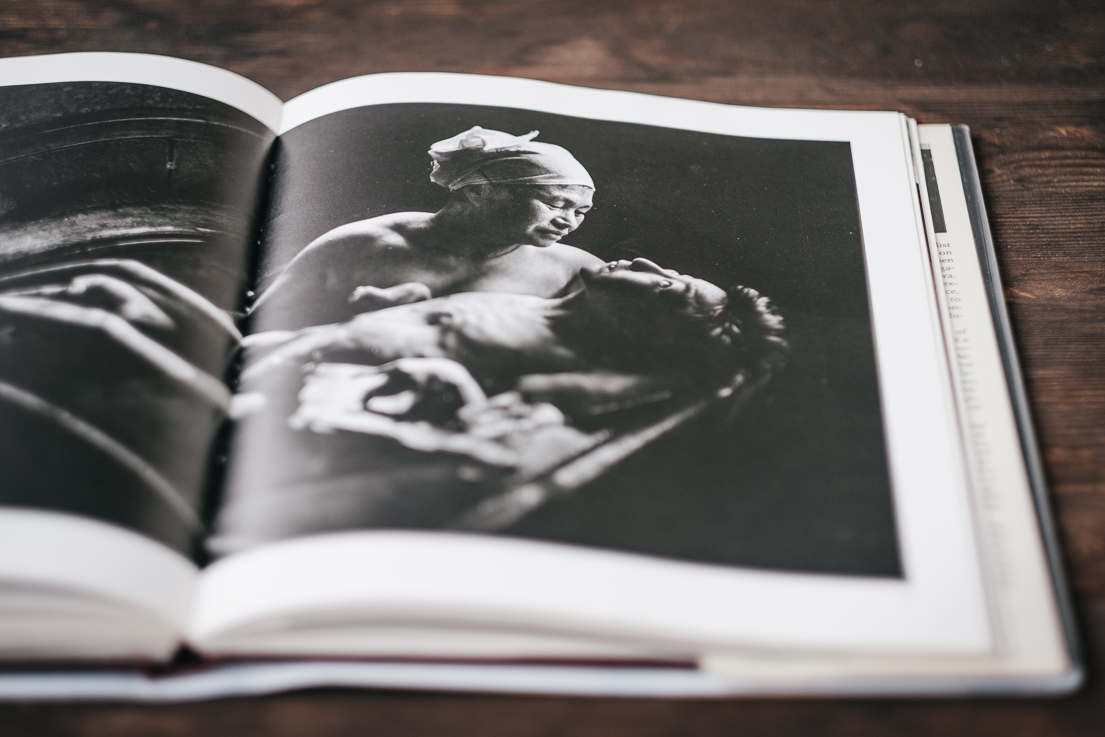
Alles in allem muss ich sagen, dass dieser Klassiker der Dokumentarfotografie für jeden, der sich für dieses Genre interessiert, ein Muss ist. Neben den Lektionen in Journalismus und Fotografie bekommt man zudem auch noch ein nachdenklich machendes Werk, dass auch heute durch Katastrophen wie Fukushima oder auch der Verseuchung des Rio Doce in Brasilien mit giftigem Klärschlamm nichts an seiner Aktualität verloren hat. Und ein imposantes Mahnmal gegen den zu leichtsinnigen Umgang mit der Natur und der Gesundheit und dem Leben der Menschen…
Thus, altogether I must say that this classic of documentary photography is a must have for everyone interested in this genre. Besides the lessons in journalism and photography, you additionally get a thought provoking work which to this day has nothing lost of its relevance through catastrophes like Fukushima or the contamination of the Rio Doce in Brazil with waste toxic slugde. And it’s an impressive memorial against a light-headed handling with nature or the health and life of human beings…
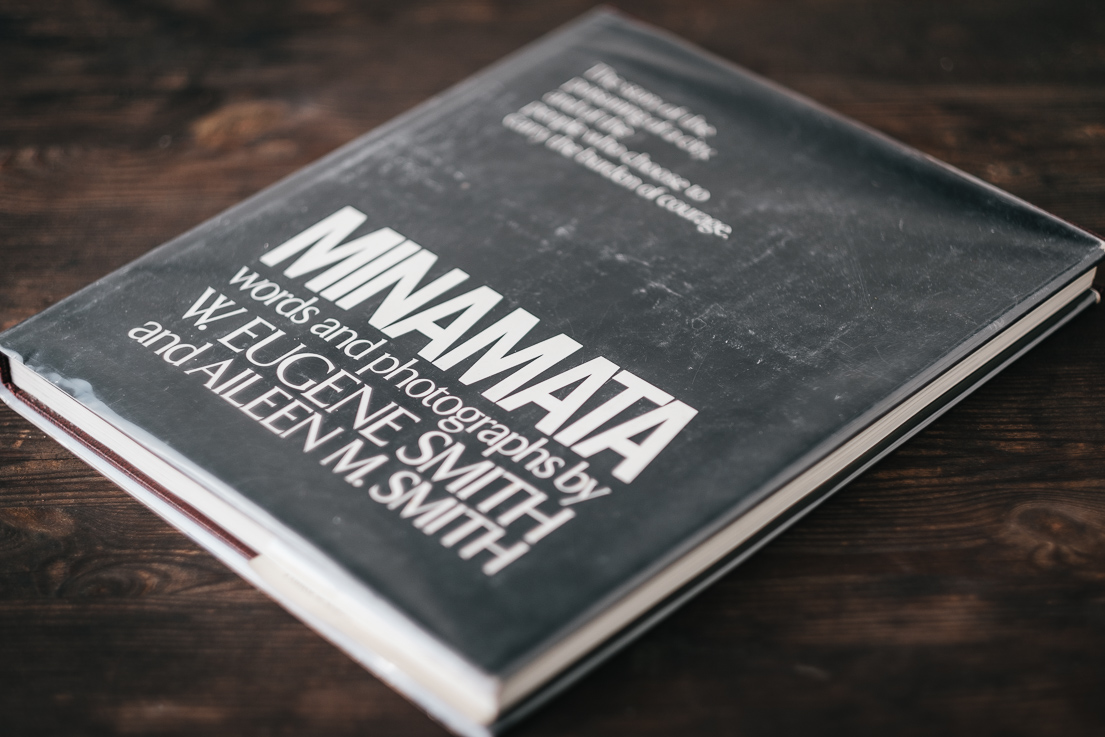


[…] think of another photographer off the top of my head – apart from perhaps Dorothea Lange and W. Eugene Smith – who would fit this description so extremely well and to a similar extent. And even the […]